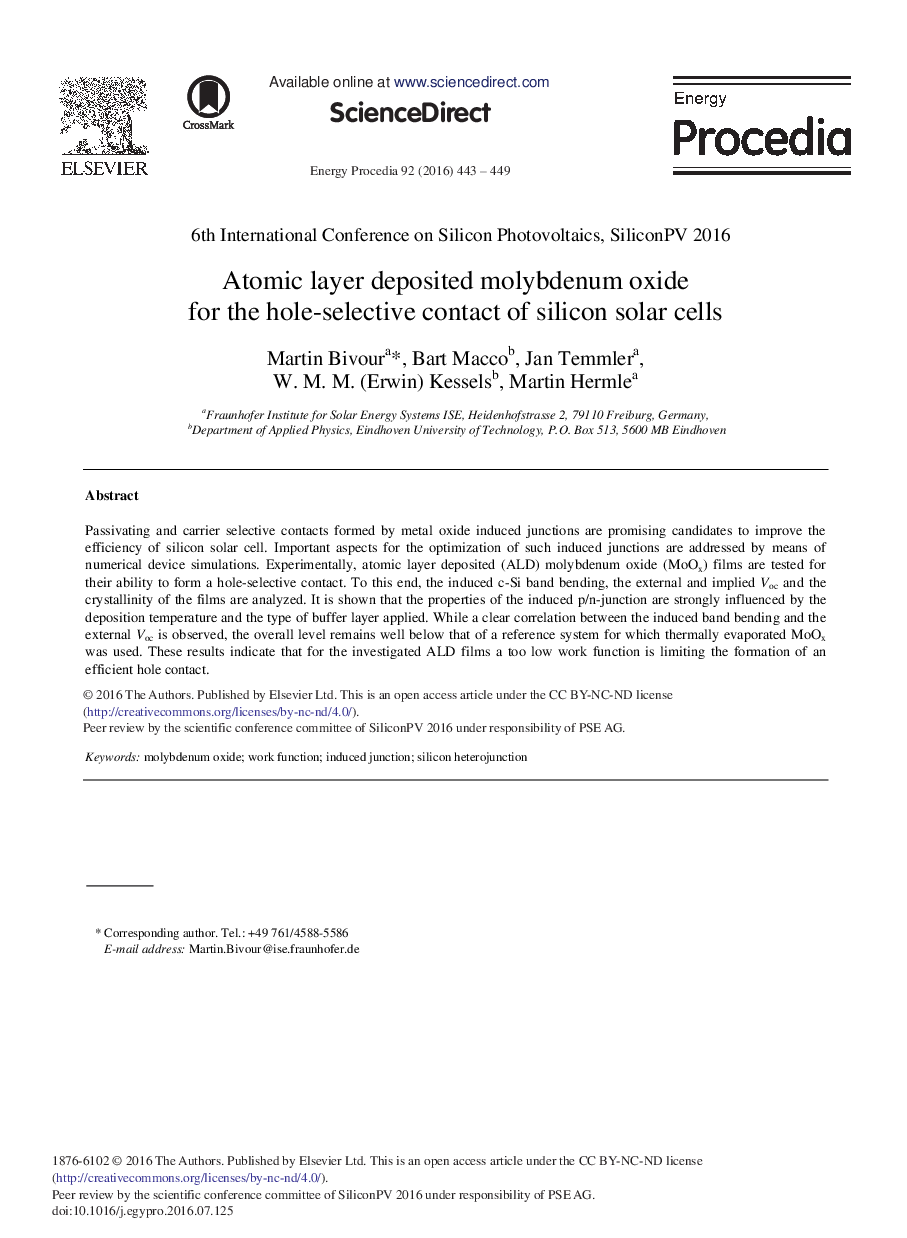| Article ID | Journal | Published Year | Pages | File Type |
|---|---|---|---|---|
| 5446613 | Energy Procedia | 2016 | 7 Pages |
Abstract
Passivating and carrier selective contacts formed by metal oxide induced junctions are promising candidates to improve the efficiency of silicon solar cell. Important aspects for the optimization of such induced junctions are addressed by means of numerical device simulations. Experimentally, atomic layer deposited (ALD) molybdenum oxide (MoOx) films are tested for their ability to form a hole-selective contact. To this end, the induced c-Si band bending, the external and implied Voc and the crystallinity of the films are analyzed. It is shown that the properties of the induced p/n-junction are strongly influenced by the deposition temperature and the type of buffer layer applied. While a clear correlation between the induced band bending and the external Voc is observed, the overall level remains well below that of a reference system for which thermally evaporated MoOx was used. These results indicate that for the investigated ALD films a too low work function is limiting the formation of an efficient hole contact.
Related Topics
Physical Sciences and Engineering
Energy
Energy (General)
Authors
Martin Bivour, Bart Macco, Jan Temmler, W.M.M. (Erwin) Kessels, Martin Hermle,
